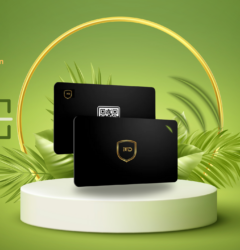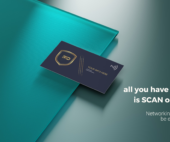Unlocking Efficiency: NFC, QR Code, and BID Cards

In recent years, contactless technology has surged in popularity, transforming the way consumers interact with businesses and conduct transactions. This evolution can be traced back to the increasing demand for convenience and speed in everyday activities. The COVID-19 pandemic further accelerated this trend, as health concerns prompted both consumers and businesses to seek safer alternatives to traditional payment methods.
As a result, contactless solutions have become a staple in various sectors, from retail to transportation, fundamentally altering the landscape of consumer behavior. The rise of contactless technology is not merely a fleeting trend; it represents a significant shift in how we perceive and engage with financial transactions. The proliferation of smartphones equipped with Near Field Communication (NFC) capabilities has made it easier than ever for consumers to make payments without physical contact.
Additionally, the integration of QR codes into mobile applications has provided an alternative method for transactions that is both user-friendly and efficient. As businesses adapt to these changes, they are discovering that embracing contactless technology can lead to enhanced operational efficiency and improved customer satisfaction.
Key Takeaways
- Contactless technology has seen a significant rise in popularity due to its convenience and safety during the COVID-19 pandemic.
- NFC, QR codes, and BID cards are the main types of contactless technology, each with its own unique features and applications.
- Businesses can benefit from contactless technology through improved efficiency, reduced costs, and enhanced customer experience.
- Contactless technology improves customer experience by providing a seamless and convenient payment process, reducing wait times, and minimizing physical contact.
- Various industries, including retail, hospitality, healthcare, and transportation, can implement contactless technology to streamline operations and enhance customer satisfaction.
Understanding NFC, QR Code, and BID Cards
At the heart of contactless technology lies several key components, including Near Field Communication (NFC), Quick Response (QR) codes, and Bitnou Identification (BID) cards. NFC is a short-range wireless communication technology that allows devices to exchange data when they are brought within close proximity, typically within a few centimeters. This technology is widely used in mobile payment systems, enabling users to tap their smartphones on payment terminals to complete transactions seamlessly.
The convenience of NFC has made it a preferred choice for consumers who value speed and efficiency in their purchasing experiences. QR codes, on the other hand, have gained traction as a versatile tool for various applications beyond payments. These two-dimensional barcodes can store a wealth of information, including URLs, product details, and payment instructions.
Users can scan QR codes with their smartphones to access this information instantly. This capability has been particularly beneficial during the pandemic, as businesses have utilized QR codes for contactless menus in restaurants and digital ticketing for events.
Together, these technologies form a robust ecosystem that enhances the overall contactless experience.
Benefits of Contactless Technology for Businesses

The adoption of contactless technology offers numerous advantages for businesses looking to streamline operations and enhance customer engagement. One of the most significant benefits is the reduction in transaction times. With contactless payments, customers can complete their purchases in mere seconds, minimizing wait times at checkout counters.
This efficiency not only improves customer satisfaction but also allows businesses to process more transactions within a given timeframe, ultimately boosting revenue. Moreover, contactless technology can lead to cost savings for businesses by reducing the need for physical cash handling and associated security measures. With fewer cash transactions, businesses can lower their expenses related to cash management, such as counting, transporting, and securing cash deposits.
Additionally, the implementation of contactless solutions often results in fewer errors during transactions, as automated systems reduce the likelihood of human mistakes. This increased accuracy can enhance financial reporting and inventory management, providing businesses with better insights into their operations.
How Contactless Technology Improves Customer Experience
| Benefits of Contactless Technology | Impact on Customer Experience |
|---|---|
| Convenience | Customers can make quick and easy transactions without the need to physically touch anything. |
| Safety | Reduces the risk of spreading germs and viruses, providing a sense of security for customers. |
| Efficiency | Speeds up the payment process, leading to shorter wait times and improved satisfaction. |
| Flexibility | Allows customers to choose their preferred payment method, enhancing their overall experience. |
The integration of contactless technology significantly enhances the overall customer experience by providing convenience and flexibility. Consumers today are accustomed to fast-paced lifestyles and expect seamless interactions with businesses. Contactless payments cater to this demand by allowing customers to complete transactions quickly without fumbling for cash or cards.
This ease of use is particularly appealing in high-traffic environments such as airports, public transportation systems, and busy retail stores. Furthermore, contactless technology fosters a sense of safety and hygiene that has become increasingly important in today’s world. The ability to make payments without physical contact alleviates concerns about germs and viruses that can be transmitted through shared surfaces.
Businesses that adopt contactless solutions demonstrate their commitment to customer well-being, which can enhance brand loyalty and attract new customers who prioritize health-conscious practices. By prioritizing convenience and safety, businesses can create a positive atmosphere that encourages repeat visits and long-term relationships with their clientele.
Implementing Contactless Technology in Various Industries
The versatility of contactless technology allows it to be implemented across a wide range of industries, each benefiting from its unique capabilities. In the retail sector, for instance, contactless payments have become commonplace at checkout counters, enabling customers to pay quickly using their smartphones or contactless cards. Retailers are also leveraging QR codes for promotions and loyalty programs, allowing customers to access discounts or rewards simply by scanning a code.
In the hospitality industry, hotels and restaurants have embraced contactless solutions to enhance guest experiences. Mobile check-in and check-out processes streamline hotel stays, while digital menus accessed via QR codes reduce physical contact between staff and guests in restaurants. Transportation services have also adopted contactless technology; public transit systems now offer tap-and-go payment options that allow commuters to board buses and trains without needing cash or tickets.
This widespread adoption across various sectors illustrates the adaptability of contactless technology and its potential to revolutionize customer interactions.
Security and Privacy Concerns with Contactless Technology

Despite the numerous benefits associated with contactless technology, security and privacy concerns remain prevalent among consumers and businesses alike. One major issue is the potential for unauthorized access to sensitive financial information. While NFC transactions are generally secure due to encryption protocols, there is still a risk of data interception if proper security measures are not implemented.
Cybercriminals may exploit vulnerabilities in mobile devices or payment terminals to gain access to personal information. Additionally, privacy concerns arise from the data collection practices associated with contactless transactions. Businesses often gather information about consumer behavior through payment systems, which can lead to questions about how this data is stored and used.
Consumers may feel uneasy about sharing their information if they are unsure about the security measures in place or how their data will be utilized. To address these concerns, businesses must prioritize transparency regarding data handling practices and invest in robust security measures that protect customer information.
Future Trends and Innovations in Contactless Technology
As technology continues to evolve, so too will the landscape of contactless solutions. One emerging trend is the integration of biometric authentication methods into contactless payment systems. Fingerprint recognition and facial recognition technologies are being explored as ways to enhance security while maintaining convenience for users.
By incorporating biometric features, businesses can provide an additional layer of protection against fraud while ensuring that legitimate users can complete transactions effortlessly. Another trend gaining traction is the expansion of contactless technology into new areas such as healthcare and smart cities. In healthcare settings, contactless solutions can facilitate patient check-ins and payments while minimizing physical interactions between patients and staff.
Smart city initiatives are also exploring the use of contactless technology for public services such as parking meters and toll booths, allowing citizens to make payments quickly and efficiently without needing cash or cards. These innovations highlight the potential for contactless technology to reshape various aspects of daily life beyond traditional retail environments.
Tips for Choosing the Right Contactless Solution for Your Business
When considering the implementation of contactless technology, businesses must carefully evaluate their options to select the most suitable solution for their needs. One crucial factor is compatibility with existing systems; businesses should ensure that any new contactless solution integrates seamlessly with their current payment infrastructure. This compatibility will minimize disruptions during the transition process and facilitate a smoother implementation.
Additionally, businesses should prioritize user experience when selecting a contactless solution. The chosen technology should be intuitive for both employees and customers alike; complicated systems may deter users from adopting new payment methods. Furthermore, it is essential to consider scalability; as a business grows, its payment needs may evolve, necessitating a solution that can adapt accordingly.
By taking these factors into account, businesses can make informed decisions that enhance operational efficiency while meeting customer expectations in an increasingly digital world.





